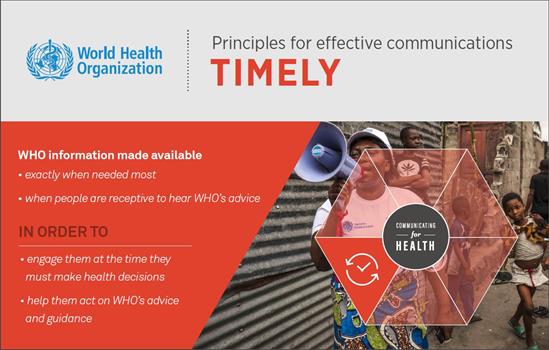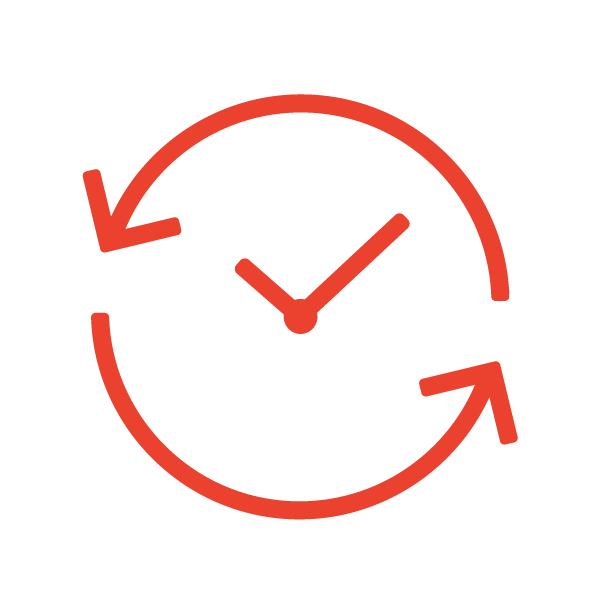
Principle: Timely
Communicate at the right time
Tactics to apply to make your communications timely
Communicate at the right time
Timing influences how a target audience reacts to messages. People can get overwhelmed with information coming from many sources and channels. WHO communicators must direct messages to decision-makers when they are most receptive.
Leverage health awareness days
Communicators can focus messaging on a particular day or period of time that advocacy groups have already chosen to promote awareness of a health issue. These special days focus media, policy-maker and public attention on recommendations and new information. WHO supports several world health days as noted on the WHO global editorial calendar.
Plan timing of messages to the risk
Some health risks are seasonal. Although information on these risks is always available, people are not likely to look for information until a threat is imminent.
When planning messages for seasonal health risks, communicators should consider timing to increase target audience attention and action.
- Promote messages about natural hazards, such as floods, hurricanes, tornadoes and extreme heat or cold, immediately before and during the seasons in which they most frequently occur.
- Release messages about seasonal health hazards, such as asthma and influenza, before and during the seasons in which they most often occur.
- Create health risk alerts timed to when individuals are paying attention to local forecasts of severe weather or poor air quality.
- Engage a target audience, such as older adults, at specific life stages. Develop age-specific recommendations for them and encourage age-related screenings.
- Choose communications channels that reach decision-makers at critical age-related times, such as the first antenatal care visit and the first school entry.
Principles for effective communications
What we do







